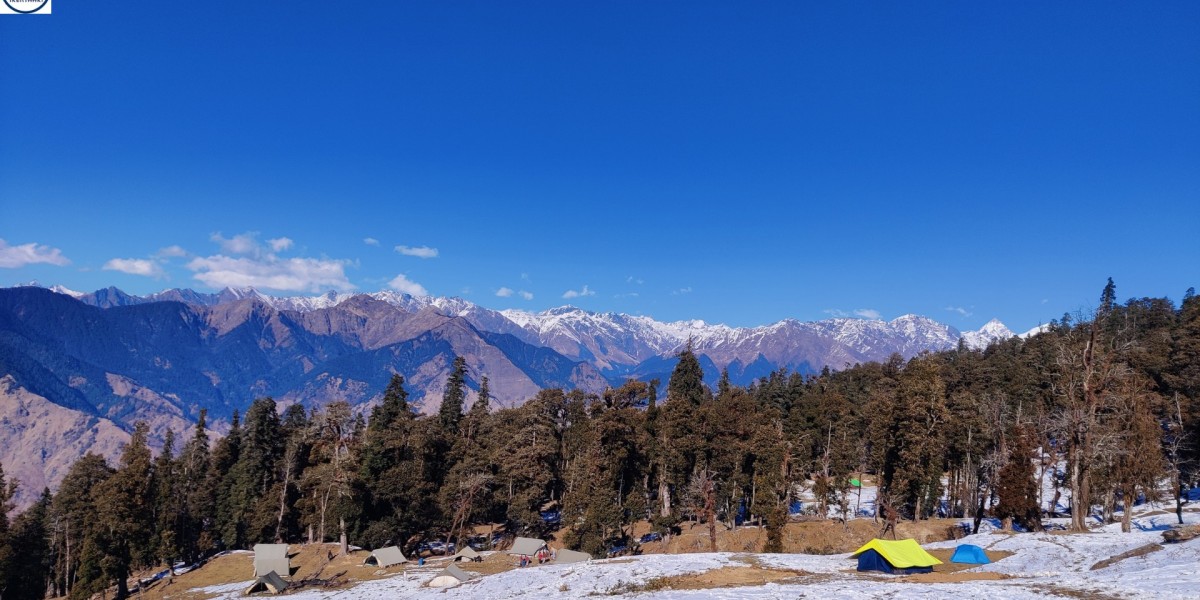I never planned on doing the Kedarkantha trek. It wasn’t on some bucket list. I didn’t even know much about it. A friend mentioned it over a cup of tea one evening — “Easy trek, great views, loads of snow. You’ll love it.” That was it. A few weeks later, I found myself in a beat-up shared cab, bouncing along Uttarakhand’s mountain roads toward a tiny village called Sankri.
No fancy expectations. No idea what I was getting into.
Day One: Sankri – The Beginning of Quiet
Sankri is not a place that pretends to be anything. It is just there-small, sleep, surrounded by pines and ice-dust roofs. We arrived late in the afternoon. The sun was taking a dip, putting a long shade across the hills. Some local children were playing cricket with a stick and a plastic ball. Some women were sitting outside their homes, chatting in low voices, wrapped in wool shawls. No wifi. No honking. No buzz.
It already felt like a different world.
That night, it got cold. Not "Jacket" cold. I means your hands get cold when you take them out of your pocket. We roam around a small fire, sipping the tea, talking togther. Somebody started humming an old Kishore Kumar song. This was the moment I knew - it was going to be something special.
Day Two: Into the Forest
The real Kedarkantha trek began the next morning. We left Sankri and went into the forest - dark green cedar trees all around, the way the sun smells with soil and a little sweet smell. The path was not very steep, but it kept going up. And silence ... it is difficult to explain. The more just listening to the forest. No traffic, no phone is ringing. Frozen land and just shoes sound on topical birds.
By the time we reached the Juda Ka Talab, a frozen lake in the middle of nowhere. But what is the place to stop? The lake looked like a mirror that had forgotten how to reflect. The trees were standing around it. We established a camp nearby, ate steaming hot rice and dal, and just lay back on the ice, staring at the sky.
It felt like we were the only people on the planet.
Day Three: White Everywhere
Woke up to snow.
Not just a little dusting — proper, thick, soft snow that swallowed our footprints within minutes. The forest looked different now. What was green yesterday was white today. The air tasted colder. Every breath made your nose sting.
The climb to base camp was harder. Snow makes everything slower. You slip, you sink, your legs work double. But man, the view… Every time we looked back, the valley was opening up behind us. The mountains had started to show themselves, teasing us with little glimpses.
We reached base camp in the afternoon. It was just a wide open patch, surrounded by snowy hills. I dropped my bag, kicked off my boots, and just sat there — exhausted and completely content.
Dinner was simple — chapati, potato curry, and hot soup. But out there, it tasted like a five-star meal. Afterward, I stepped out of the tent, and looked up.
The sky was... insane. No city lights. No haze. Just stars. So many of them. I remember thinking, “This is the kind of sky you write poems about.”
Day Four: The Summit
We started before dawn. It was still dark, and cold enough to make your fingers go numb if you took your gloves off. Headlamps on, boots crunching through frozen snow, breath coming out in clouds.
This was the tough part.
The final stretch to the Kedarkantha trek summit is steep — a proper calf-burner. And in snow, it tests you. But you keep going. Step. Breathe. Step. Breathe.
And then... you reach the top.
There’s a small shrine up there. Some stones, a trident, prayer flags fluttering in the wind. But what really hits you is the silence. And the view. 360 degrees of mountains — Swargarohini, Bandarpoonch, even distant Nanda Devi if the sky’s clear.
We just stood there. No one said much. Some people cried. Some laughed. I didn’t do either. I just stood still, let the wind hit my face, and felt something I can only describe as small — but in a good way.
Like the mountains had taken all the noise out of me.
Coming Down
The descent was faster, but every turn felt like leaving something behind. Back through the snowfields, through the forest, past Juda Ka Talab again. Everything looked different now — probably because I was different too.
We reached Sankri two days later. I remember sitting on a wooden bench outside a local tea shop, sipping chai and staring at the trail we had just returned from. My legs ached. My nose was sunburnt. My jacket smelled like smoke. And I was stupidly, wildly happy.
So, Is the Kedarkantha Trek Worth It?
Yes. A hundred times yes.
Not because it’s the hardest trek or the most famous one. But because it makes you slow down. Because it shows you what snow really sounds like when it falls in the night. Because you see stars so bright they don’t feel real. Because you’ll meet people on the trail — strangers at first, friends by the end — who’ll share stories and chocolate and blister plasters with you without a second thought.
And because you’ll come back lighter. Calmer. And a little more in love with the world.
Final Thoughts
If you’re thinking of doing the Kedarkantha trek, stop thinking.
Go.
Don’t wait for the “perfect time” or the best gear or the right group. Just pack warm, wear good shoes, carry your sense of adventure, and let the mountains do the rest.
You don’t need to be a hardcore trekker. You just need to be someone who’s curious — about nature, about quiet, about what it feels like to sleep under a sky that hasn’t forgotten how to shine.
And when you’re standing at the summit, snow in your boots, face in the wind, heart full — you’ll know exactly what I mean.







